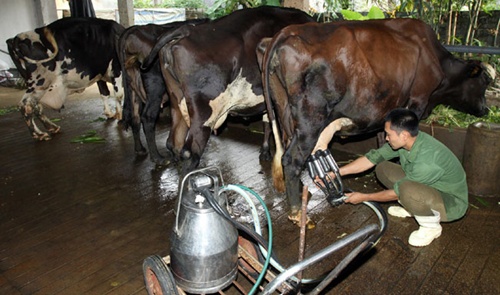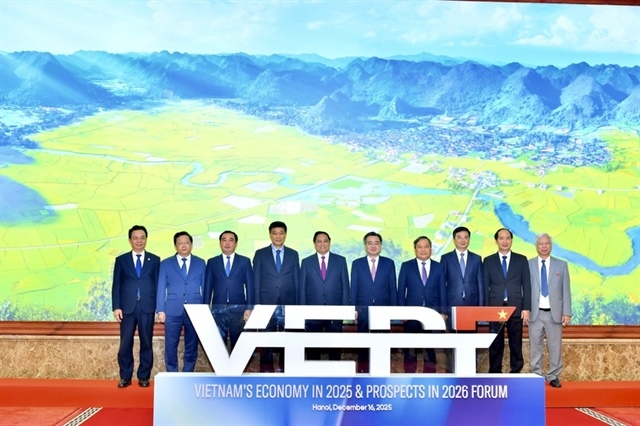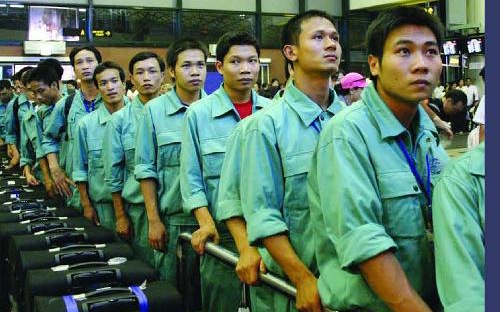Dairy industry urged to boost cattle numbers
Dairy industry urged to boost cattle numbers
The Viet Nam Husbandry Association is urging the country's dairy industry to develop its cattle and use modern technologies so it could diversify and raise the quality of its products.

Nguyen Dang Vang, president of the Viet Nam Husbandry Association, said the country was aiming to meet 60 per cent of domestic demand for fresh milk for an anticipated population of about 113 million in 2045. To achieve this, the country must develop a herd capable of producing 5.65 million tonnes of milk per year.
The country's domestic fresh milk production in 2013 was 456,400 tonnes, equivalent to 5.1 litres per capita per year. This satisfied only 28 per cent of the country's demand, with imported fresh milk satisfying the remaining 72 per cent. Last year, the country's average annual per capita consumption of fresh milk was 18 litres.
From August 2007 to August 2008, Viet Nam imported more than US$5.7 billion worth of milk and dairy products, representing an annual increase of 14 per cent. In 2013 alone, milk and dairy product imports were worth $1.089 billion.
By 2045, Viet Nam will still have to import 2.25 million tonnes of milk worth $3.6 billion every year, to raise annual average per capita milk consumption to 50 litres, or just 60 per cent of Japan's current consumption levels.
Vang said Viet Nam should focus on developing large-scale dairy farms while using high-technology dairy farming techniques, and noted that small-scale dairy farms accounted for up to 66 per cent of domestic production.
Figures from the Viet Nam Dairy Association showed that as of April 1, the country had 200,400 cows, a 14-per cent increase over that of last year and a 67-per cent increase over that of 2010.
In recent years, several companies invested heavily in the development of dairy farms. The country currently has 15 farms with 1,000 to 5,700 cows, and five more are in the pipeline, altogether accounting for 30 per cent of domestic fresh milk production.
However, Viet Nam's dairy farming scale remains small. Figures from 14 provinces and four companies showed that in 2013, a farming household raised an average of 9.3 cows.
This is higher than that of Indonesia, with three cows per household, but is a far cry from that of Japan, with 72 cows per household; the United States, with 96 cows per household; and Taiwan, with 126 cows per household.
In addition, the productivity of the average cow in Viet Nam remained low in comparison with that other countries and territories with the same dairy farming advantages. The husbandry association predicts that by 2045, Viet Nam's cow productivity could reach that of Taiwan.
According to Nguyen Quoc Khanh, executive director of Vinamilk, which holds 50 per cent of Viet Nam's milk market, dairy companies should provide farming households with training and support in modern techniques to ensure the development of dairy farming areas.
He said that investing in modern milk processing plants was also essential to ensure diversification and quality enhancement of products, as well as the upgrading of levels of competitiveness and capability to meet consumer demand.
Experts said the country also needed a national management system for dairy cattle and measures to protect domestic production, such as the application of import quotas.
Vu Ngoc Quynh, general secretary of the Viet Nam Dairy Association, said the dairy industry's development was in line with the Government plan to meet domestic demand while expanding in the world market.
Viet Nam is one of a few countries in Asia that are earning from milk exports. In 2013, the country's export turnover for milk products reached $230 million, mostly from Vinamilk.
bizhub





















